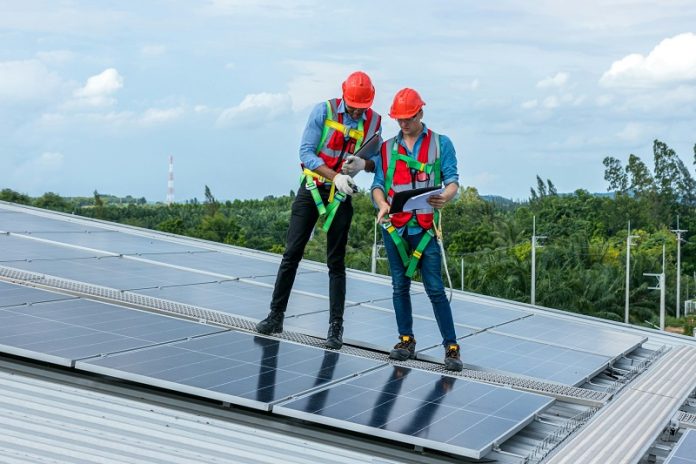
Scientists at EPFL (École Polytechnique Fédérale de Lausanne) have discovered a smart way to make perovskite solar cells more efficient and stable.
These solar cells are already seen as one of the most exciting clean energy technologies because they’re cheaper and easier to produce than traditional silicon-based panels.
But they still face some problems—especially losing energy and not lasting long enough.
To increase the efficiency of solar panels, researchers often use a special kind of perovskite material called wide-bandgap (WBG) perovskites.
These are great at capturing the high-energy part of sunlight, which is useful when layering them with silicon in tandem solar cells.
But WBG perovskites have a big issue: over time, their ingredients tend to separate, reducing performance. Scientists call this “phase segregation.”
One way to stop this from happening is to add rubidium, a chemical element that helps stabilize the material.
However, rubidium often clumps together or forms unwanted parts, which actually harms the material instead of helping it.
This is where the EPFL team came up with a clever trick. Led by Lukas Pfeifer and Likai Zheng from Michael Grätzel’s lab, the researchers used something called “lattice strain.”
This means they slightly stretched or compressed the material at the atomic level to keep rubidium locked in place where it’s needed.
They did this by carefully changing the chemical makeup of the material and heating and cooling it in a controlled way. The strain acted like a gentle squeeze that kept everything in order.
To make sure it was working, they used powerful tools like X-ray diffraction and solid-state nuclear magnetic resonance to look closely at how the atoms were arranged.
They also used computer simulations to better understand what was happening inside the material.
The team discovered that adding chloride ions also helped balance things out, making the perovskite more uniform and reducing defects. The result was a much more stable and efficient material.
The improved perovskite solar cell reached an open-circuit voltage of 1.30 volts—an impressive 93.5% of its theoretical maximum. It also had stronger light emission, showing that it was better at turning sunlight into electricity.
This breakthrough could lead to better-performing solar panels, especially tandem cells that stack different materials for maximum energy capture. It could also benefit other technologies that use perovskites, like LEDs and sensors.
By solving the rubidium problem with a “strain trick,” this research opens the door to more powerful and reliable solar energy solutions.



